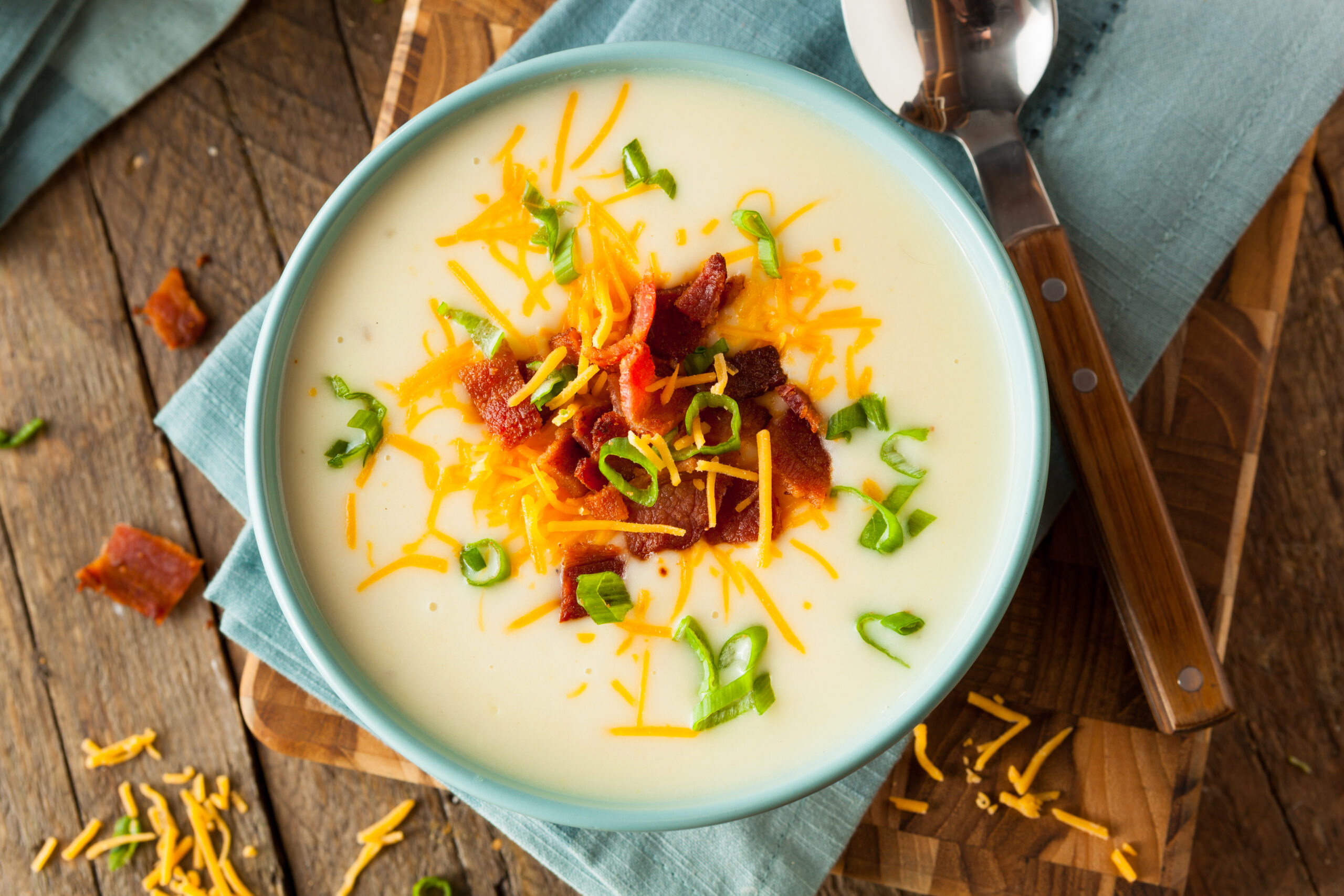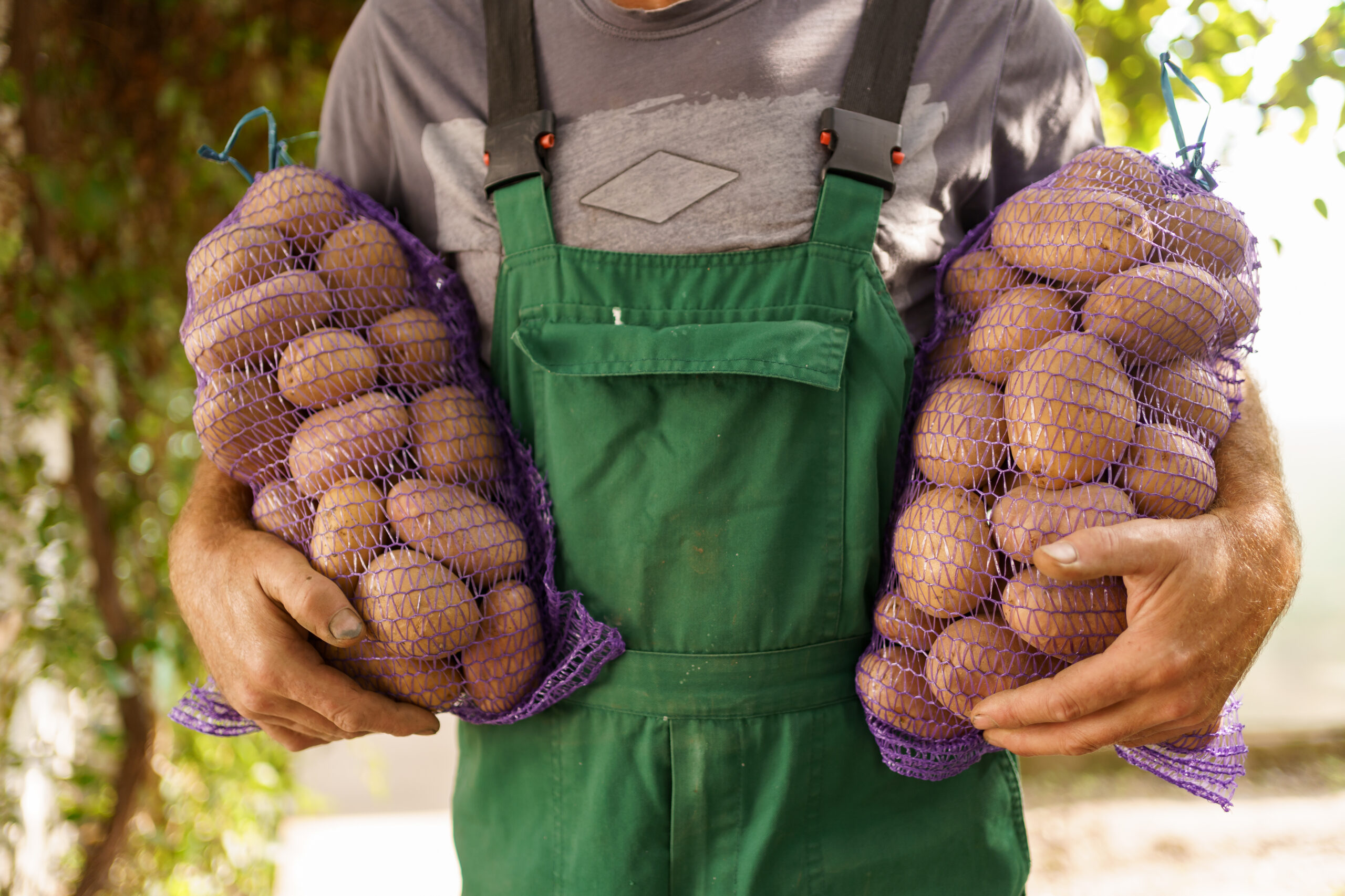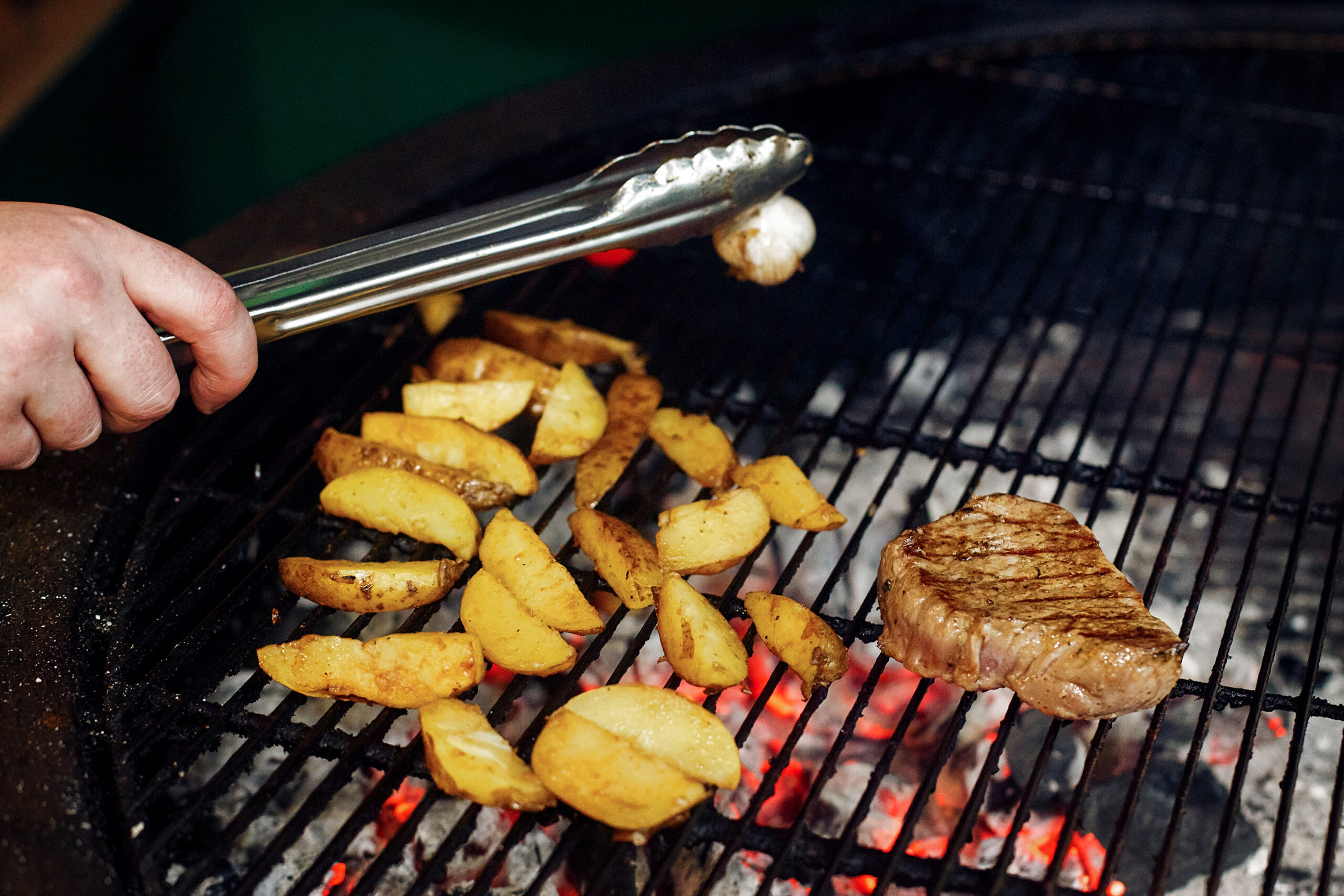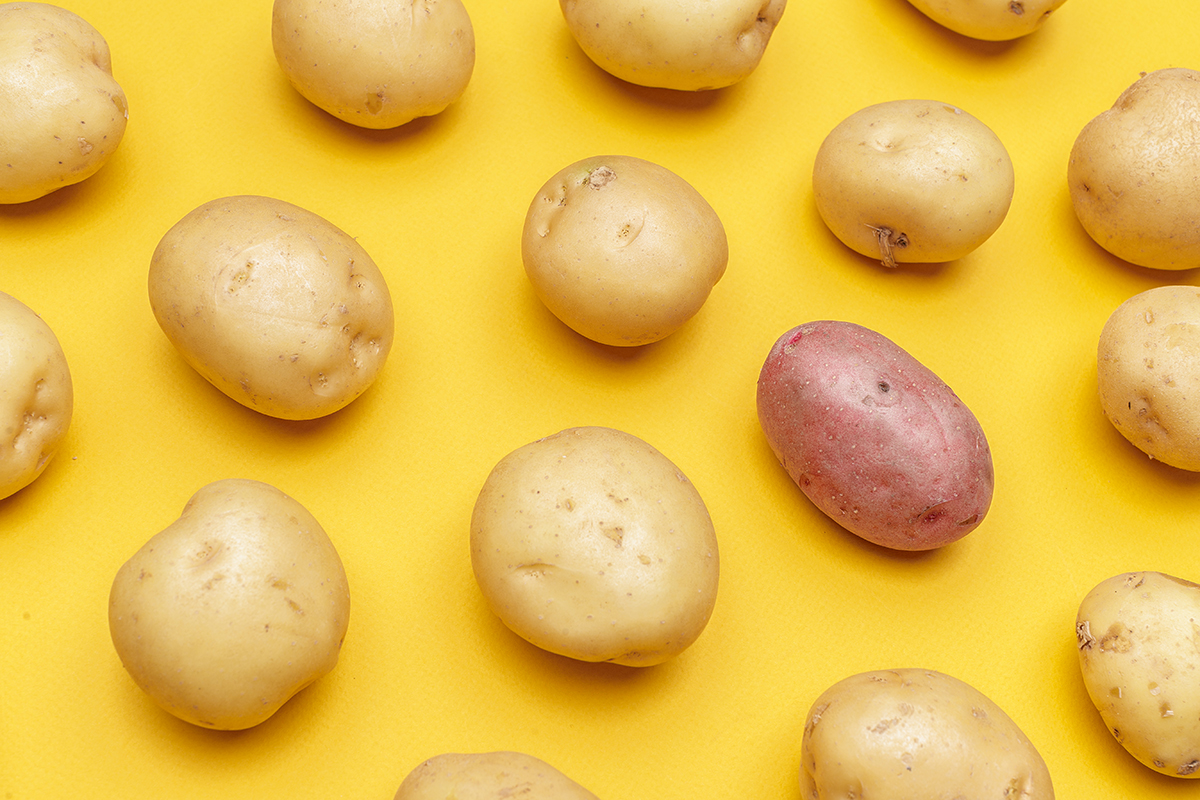4 Easy Back-to-School Potato Recipes
DIY
4 Easy Back-to-School Potato Recipes
Aug 04, 2023
- 1 min read

As summer break comes to a close, it’s time to gear up for back-to-school season. Versatile, nutritious, and oh-so-delicious, potatoes can transform into plenty of dishes that make the return to the school routine a little more enjoyable. Let’s talk about creative potato recipes that will surely become lunchbox favorites and family dinner staples:
1. Potato and Ham Breakfast Burritos: Energize Your Mornings
Mornings can be hectic during the school season, but that doesn’t mean you have to skimp on a nutritious breakfast. Prepare Potato and Ham Breakfast Burritos in advance by sautéing diced potatoes and ham, then rolling them up in tortillas with scrambled eggs and your choice of veggies. These burritos can be frozen and reheated, ensuring a quick and satisfying start to the day.
2. Potato Veggie Tots: Fun Finger Food for Lunchtime
Give your kids a lunchbox surprise with these irresistible Potato Veggie Tots. Mix grated potatoes with finely chopped vegetables like carrots, zucchini, and bell peppers. Shape the mixture into bite-sized tots and bake until crispy. These tots are a delicious and sneaky way to incorporate more veggies into your child’s diet.
3. Loaded Baked Potato Soup: Warmth in a Bowl
As the weather cools, warm up your evenings with a hearty bowl of Loaded Baked Potato Soup. Creamy and indulgent, this soup features tender potato chunks, crispy bacon bits, shredded cheese, and a dollop of sour cream. It’s a comforting dish that perfectly balances flavors and textures.
4. Cheesy Potato and Broccoli Casserole: A Comforting Classic
Start the school year with a comforting and nutritious Cheesy Potato and Broccoli Casserole. This dish combines the creamy goodness of potatoes with broccoli’s vibrant color and health benefits. Simply layer sliced potatoes and steamed broccoli in a baking dish, top with a creamy cheese sauce, and bake until golden and bubbly. It’s a complete meal that’s as hearty as it is flavorful.
With these creative and delicious potato recipes, back-to-school meals don’t have to be dull and repetitive. From comforting casseroles to fun finger foods, there’s a potato dish for every meal of the day. So, as you gear up for another school year, add these potato-based dishes to your meal rotation and enjoy the smiles they’ll bring.
In other news...

Process
The Lifecycle of A Smarter Potato
We do everything possible to plant and harvest the highest…
Read on
DIY
5 Tips to Mastering Grilled Potatoes
When it comes to summer grilling, there's no denying that…
Read on5 Tips to Mastering Grilled Potatoes
DIY
5 Tips to Mastering Grilled Potatoes
July 04, 2023
- 1 min read

When it comes to summer grilling, there’s no denying that potatoes have a special place. These versatile tubers can transform into delicious, smoky delights on the grill, adding a new dimension of flavor and texture to outdoor cooking. Let’s explore the art of grilling potatoes and uncover some mouthwatering techniques to make your next backyard barbecue a hit.
Selecting the Right Potatoes
Choosing the right potatoes for grilling is crucial. Opt for varieties like Gold or Red potatoes that have a firm texture and hold their shape well. These potatoes are ideal for grilling since they won’t turn mushy and will always offer a pleasant bite.
Preparing the Potatoes
Thanks to Pro Health’s Triple Wash System ensuring the cleanest potatoes possible, the only prep you’ll have to do out of the bag is a light rinse. If you prefer a softer texture, partially boil them for a few minutes before grilling. However, directly grilling them adds a delightful crispiness to the exterior while keeping the insides tender.
Adding Flavor
Enhancing the natural flavors of potatoes is just as important as cooking them. You can season your potatoes with various herbs and spices, such as rosemary, thyme, paprika, or garlic powder. Toss the potatoes in olive oil and sprinkle your chosen seasonings for an aromatic and flavorful experience.
Grilling Techniques
There are several ways to grill potatoes. One popular technique is to slice them into rounds or wedges, creating more surface area for flavors to seep in. Another is to skewer baby potatoes marinated in herbs and spices, to create delectable potato kebabs. If you prefer a whole potato, wrap it in aluminum foil to retain moisture.
Perfecting the Grill
When grilling potatoes, it’s essential to strike the right balance between direct and indirect heat. Place the potatoes on a preheated grill over medium-high heat and cook them until they develop a beautiful golden brown crust. Rotate them occasionally to ensure even cooking and prevent burning.
Grilling potatoes unlocks their full potential, delivering a blend of smoky, charred goodness and creamy tenderness. So fire up your grill, grab some potatoes, and embark on a culinary journey. Happy grilling!
In other news...

Process
The Lifecycle of A Smarter Potato
We do everything possible to plant and harvest the highest…
Read on
DIY
5 Tips to Mastering Grilled Potatoes
When it comes to summer grilling, there's no denying that…
Read on5 Great Potato Salad Recipes For Spring
DIY
5 Great Potato Salad Recipes For Spring
April 04, 2023
- 1 min read

Potato salad is a classic dish that’s perfect for springtime. With warmer weather and more outdoor gatherings on the way, potato salad is a great side dish that will surely be a hit at any function. If you’re looking for some inspiration for your next spring gathering, here are the top 5 potato salad recipes to try:
Classic Potato Salad
The classic potato salad recipe is a must-try for any spring gathering. This recipe calls for boiled potatoes, diced celery, chopped onions, mayonnaise, mustard, salt, and pepper. Add some hard-boiled eggs, pickles, or bacon for some extra flavor.
Red Potato Salad
This recipe is a great option if you’re looking for a colorful and flavorful dish. Red potatoes have a slightly sweeter taste than other potatoes, which makes them perfect for a new spin on an old classic. Simply boil the potatoes and mix in diced red onions, celery, mayonnaise, sour cream, Dijon mustard, salt, and pepper.
Loaded Baked Potato Salad
If you love loaded baked potatoes, then you’ll love this potato salad recipe. It calls for boiled potatoes, sour cream, cheddar cheese, crumbled bacon, diced green onions, and salt and pepper. You can also add in some diced tomatoes or jalapeños for some extra flavor.
German Potato Salad
This potato salad recipe has a tangy and sweet flavor that is perfect for spring. It calls for boiled potatoes, bacon, chopped onions, apple cider vinegar, sugar, and Dijon mustard. The combination of sweet and sour flavors is sure to be a hit at any function.
Mediterranean Potato Salad
If you’re looking for a healthy and flavorful potato salad recipe, then this is the one for you. It calls for boiled potatoes, diced tomatoes, chopped cucumbers, diced red onions, crumbled feta cheese, olive oil, lemon juice, salt, and pepper. You can also add in some olives or roasted red peppers for extra flavor.
No matter which potato salad recipe you choose, you can’t go wrong with this classic dish. Whether you’re hosting a backyard barbecue, a family picnic, or just enjoying a sunny day outdoors, potato salad is a great side dish for any springtime gathering.
In other news...

Process
The Lifecycle of A Smarter Potato
We do everything possible to plant and harvest the highest…
Read on
DIY
5 Tips to Mastering Grilled Potatoes
When it comes to summer grilling, there's no denying that…
Read on6 Steps to Composting Your Potatoes
DIY
6 Steps to Composting Your Potatoes
April 04, 2023
- 1 min read

Composting is an environmentally friendly way to dispose of organic waste and create nutrient-rich soil for gardening. While many people think of composting fruits and vegetables like banana peels and carrot tops, potatoes can also be composted.
Potatoes are a great addition to compost because they are high in nutrients like potassium and phosphorus, which are essential for plant growth. Plus, composting potatoes is an easy way to reduce food waste and help the environment.
Here are six tips for composting potatoes:
Choose the right potatoes
When composting potatoes, it’s best to use ones that are starting to go bad or have already spoiled. Fresh potatoes will take longer to break down and can attract pests like rodents and flies.
Cut potatoes into smaller pieces
To speed up the composting process, cut your potatoes into small pieces. This will also help them break down more evenly and prevent clumping.
Add other organic materials
To create a balanced compost, it’s important to add a variety of organic materials like leaves, grass clippings, and other fruit and vegetable scraps. This will help create a rich, fertile soil that plants will thrive in.
Mix the compost
Turning the compost regularly will help aerate it and speed up the decomposition process. Use a pitchfork or shovel to mix the compost once or twice a week.
Monitor the moisture
Compost should be moist, but not soaking wet. If the compost is too dry, add some water. If it’s too wet, add some dry organic materials like leaves or straw.
Use the compost in your garden
Once the compost has broken down and turned into a dark, crumbly soil, it’s ready to use in your garden. Spread it around your plants and watch them thrive!
Composting potatoes is a great way to reduce food waste and create nutrient-rich soil for your garden. Plus, it’s easy and inexpensive. With a little bit of effort, you can turn your potato scraps into a valuable resource for your plants.
In other news...

Process
The Lifecycle of A Smarter Potato
We do everything possible to plant and harvest the highest…
Read on
DIY
5 Tips to Mastering Grilled Potatoes
When it comes to summer grilling, there's no denying that…
Read onPotato Battery
DIY
diy
march 7, 2022
- 1 min read

We already know the various ways a potato can be fried, cooked, mashed, and baked. But the potato’s real superpower might shock you: its electricity. A staple of many elementary school science fairs – next to the baking soda volcano – the potato battery might have more practical uses than we think.
Potato batteries are fairly straightforward, but to understand how they work, let’s understand how batteries like the ones in your TV remotes work. Normal batteries are comprised of positive electrodes (cathodes), negative electrodes (anodes), and an electrolyte (usually a gel or liquid) made up of electrically charged particles.
When the electrolyte combines with the cathode and anode, it creates a chemical reaction (this is the key part) that produces electricity. So when you put a battery into a TV remote, it allows the battery to complete a circuit and power the remote.
Remember how chemical reactions are turned into electricity? Luckily, potatoes and other fruits and vegetables are filled with all kinds of acids and salts that allow the potato to act like the electrolyte in the battery. Combine this with a zinc nail (that includes negative electrodes) and copper (which contains positive electrodes), and the potato is able to act as a bridge and help create the chemical reaction necessary to create electricity and complete the circuit.
This may sound like nothing more than a high school science experiment, but some researchers believe the potato battery might be destined for more. According to a university in Israel, one potato can hold enough electricity to light LED lamps in a room for 40 days. Combined with the low cost of buying and growing potatoes, this could have significant implications for impoverished areas with no access to power grids.
So why aren’t we all using potatoes to power our everyday lives? Well, potatoes (which aren’t electric themselves, but work as a bridge for electricity to be made) don’t allow a large amount of voltage to be created. Enough to charge your phone? Yes. Enough to power your house? Maybe not. There’s also the issue of making sure the potatoes aren’t depleting the supply used for food. Should this detract from the usefulness of the potato battery? No, but don’t expect to be stopping at a potato station to charge your electric car anytime soon.
So it turns out potato batteries aren’t just novelties, they might help solve energy problems across the world. Is there anything potatoes can’t do?
In other news...

Process
The Lifecycle of A Smarter Potato
We do everything possible to plant and harvest the highest…
Read on
DIY
5 Tips to Mastering Grilled Potatoes
When it comes to summer grilling, there's no denying that…
Read on
